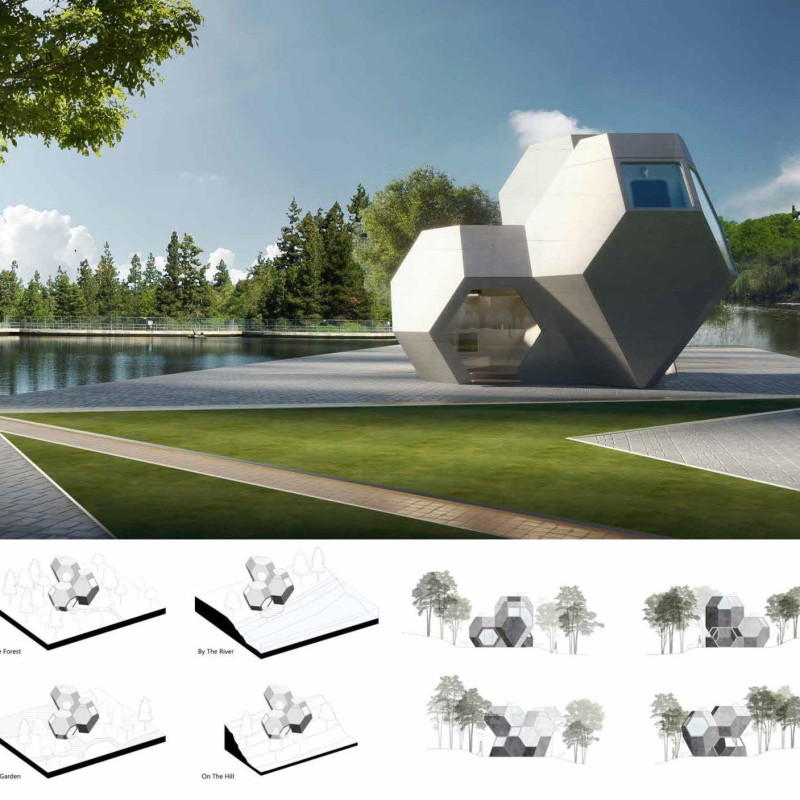5 key facts about this project
The ECO HIVE offers a new approach to housing that responds to the challenges of affordability in busy cities. Designed for locations like Shanghai, Tokyo, New York, and Paris, its modular system aims to create flexible living spaces. The overall concept is built around the idea of modularity, allowing different parts of the structure to work together while maintaining their independence.
Modularity
The design focuses on modularity, enabling the replacement or addition of components without compromising the integrity of the whole system. This feature allows for a variety of living configurations, catering to different needs and preferences. Occupants can customize their spaces, making it a practical solution for diverse urban populations.
Organic Growth
An essential aspect of the ECO HIVE is its inspiration from organic growth. The design combines natural forms with geometric shapes, encouraging a connection between the home and nature. This integration leads to a more inviting atmosphere and a better quality of life for residents. By reflecting elements found in natural settings, the architecture offers both comfort and a sense of belonging.
Fast-Loading Structure
The fast-loading structure of the ECO HIVE is a significant element that allows for quick assembly in various locations, as long as the appropriate permissions are granted. This design choice addresses the complicated land issues often faced in urban areas, making it easier to implement in high-demand environments. The structure's mobility supports the goal of improving access to affordable housing.
The ECO HIVE exemplifies an engaged approach to modern living, emphasizing practical solutions and environmental awareness. Design details such as open spaces and an abundance of light enhance the living experience, fostering a sense of community among residents.




















































